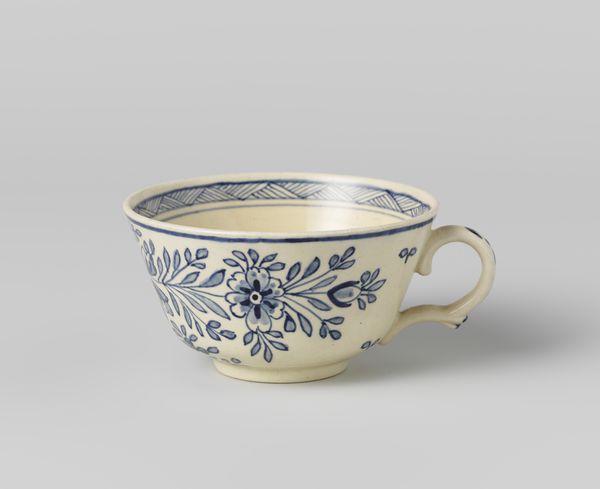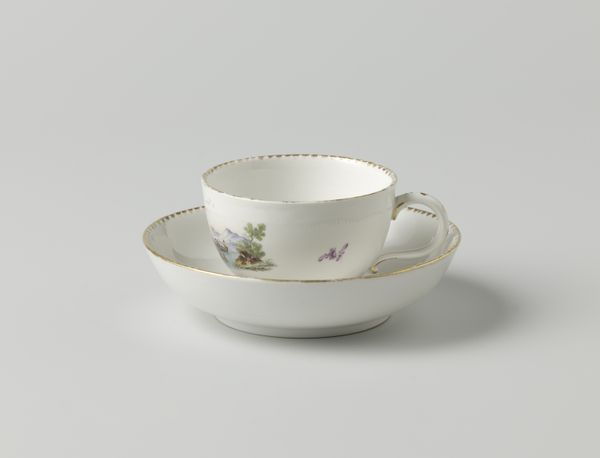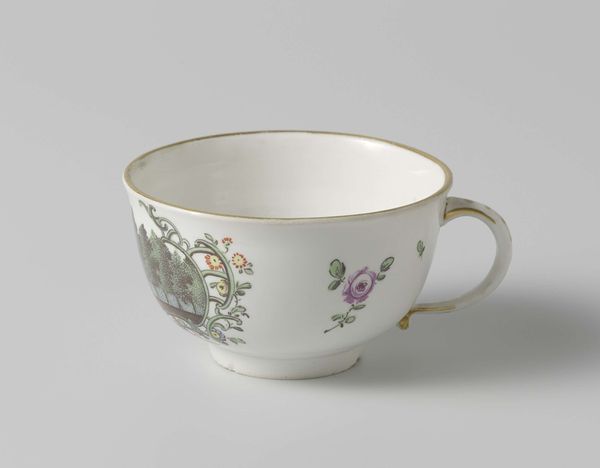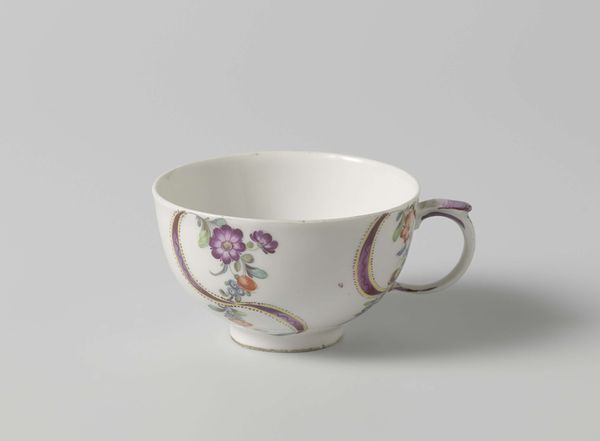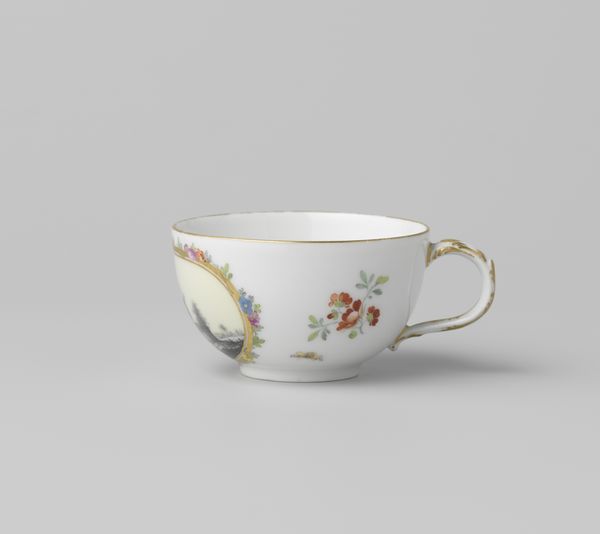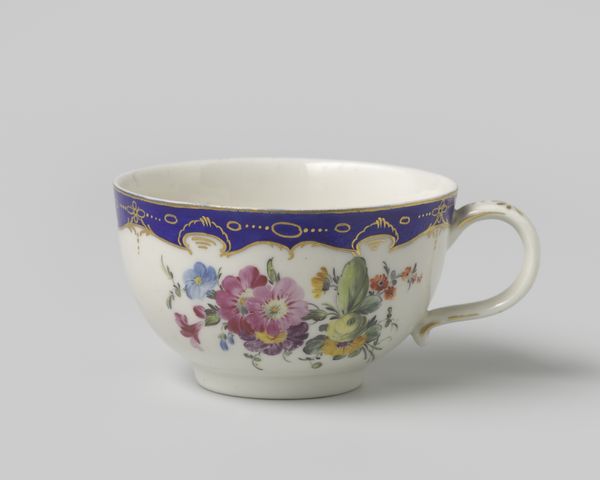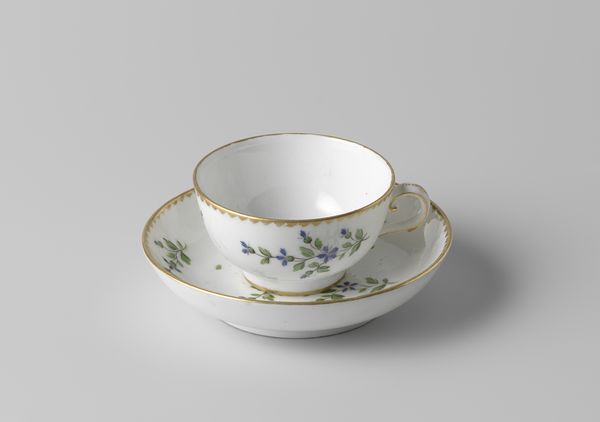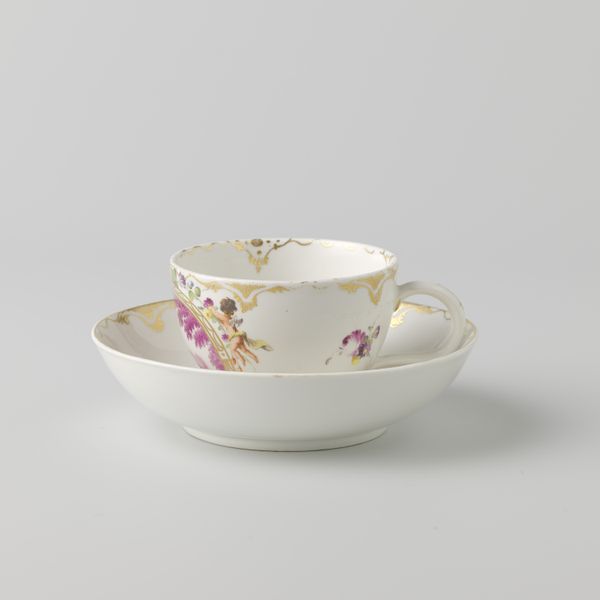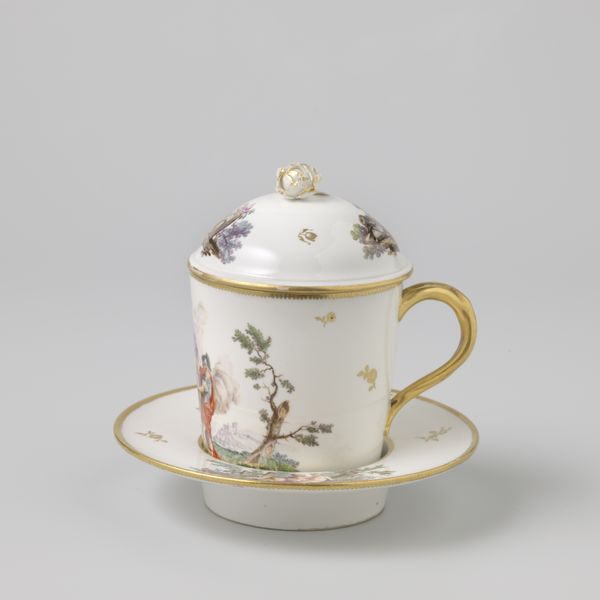
Dimensions: height 4.3 cm, width 9.5 cm, diameter 7.9 cm
Copyright: Rijks Museum: Open Domain
Curator: Here at the Rijksmuseum, we have a beautiful example of Loosdrecht porcelain, dating from around 1782-1784. This object, titled "Kop, beschilderd met een vrijend paartje"—Cup, painted with a courting couple—is a delicate scene rendered on ceramic. What’s your first impression? Editor: My immediate impression is of intimacy and restriction, strangely coexisting. It's a love scene, undoubtedly sweet, but contained, almost trapped, by the curve and confines of the teacup. Curator: Indeed. The miniaturist aesthetic emphasizes certain ideals, with this Rococo scene being a central element of its construction, right? Notice the detail: the figures are carefully positioned within a landscape, every tree and garment articulated with exquisite precision. Editor: Precisely. Rococo often idealizes these types of interactions, but on something like a teacup, is that glorification, or diminishment? Porcelain, in its very creation and consumption, historically implicated a certain level of colonial exploitation, tied inextricably to sugar production and indentured servitude. Is there a dissonance? Curator: That's certainly a valid interpretation, and highlights the context within which it existed. Looking solely at the craftsmanship, observe how the gilt edges create a harmonious yet defined form; consider it through Kantian philosophy to see a judgment of taste arising from this unity of form and decoration, an art pleasing due to its purposiveness. The simple placement of the rose adjacent to the cup's handle provides an alluring detail that completes the item. Editor: True. It also feels somewhat sanitized. A "courting couple" is hardly the whole story. I wonder what it meant to wealthy patrons sipping from such cups. A private reminder of a social contract they were simultaneously benefiting from and ignoring? Curator: It's certainly a layered piece, beyond just aesthetic considerations. We must remain mindful that art has often performed varied, complex, and occasionally conflicting social functions. The question is this: do we consume such luxury objects innocently today? Editor: It forces us to reflect upon the legacy of aesthetics and the ethics embedded within material culture, that’s certain. Curator: Indeed, that is one thing works like this can allow; a critical framework for dialogue.
Comments
No comments
Be the first to comment and join the conversation on the ultimate creative platform.
